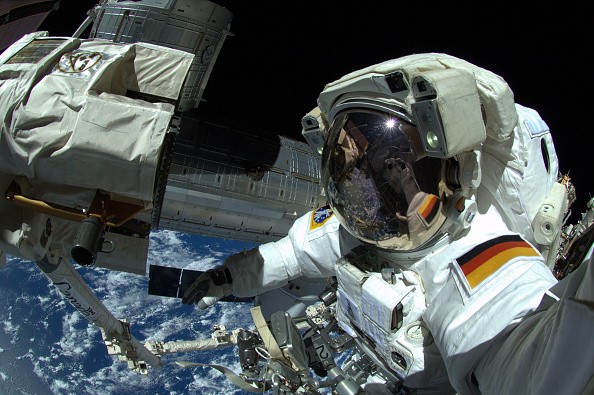NASA's bone study is almost complete.

This ongoing research of the international space union aims to know if Tetranite, a bone graft adhesive, could reverse the effects of weightlessness on bone tissues.
For the past years, NASA and other space organizations have been making efforts to reduce the effects of microgravity on astronauts' bone tissues and stem cells.
Now, NASA seems to be depending on the bone adhesive it is studying.
NASA's Bone Study is Almost Complete!
According to SciTech Daily's latest report, the Osteopromotive Bone Adhesive study of NASA is already on its second day; it is a three-day research.

Also Read : NASA's James Webb Space Telescope Detects the Deepest, Coldest Ices Ever Measured in a Molecular Cloud
This research is being conducted by NASA's flight engineers, Nicole Mann, Frank Rubio, and Josh Cassada.
JAXA's (Japan Aerospace Exploration Agency) Flight Engineer Koichi Wakata is also helping them.
The four astronauts spent their time working in the Kibo Laboratory module, observing biological specimens inside the Life Science Glovebox.
The samples they acquired were already sent back to Earth for analysis and evaluation.
As of press time, they are being compared to control samples, which are maintained on Earth under similar conditions.
NASA's Osteopromotive Bone Adhesive Study
NASA's official website explained that the new Osteopromotive Bone Adhesive study focuses on Tetranite.
"This adhesive enables bone cells called osteoblasts to repair bone fractures and defects," said the international aerospace organization.
NASA provided the exact objectives of its study, which include the following:
- Evaluate the effects of microgravity on post-natal skeletal stem cells expressing PRX1 (pnPRX1+ cells) and their contribution to the regeneration of a sub-critical size cranial defect (a bone defect that can heal spontaneously).
- Evaluate the effects of Tetranite on pnPRX1+ cells and their contribution to bone regeneration of a critical-size cranial defect (a bone defect that cannot heal spontaneously).
You can click this link to learn more details about this bone research.
Other stories we wrote about NASA:
The new partnership between NASA and Boeing aims to develop new single-aisle airliners with 30% fewer carbon emissions.
NASA scientists discovered flashes from the Sun, which could help them predict the next solar flares.
For more news updates about NASA and its other space missions, keep your tabs open here at TechTimes.

ⓒ 2025 TECHTIMES.com All rights reserved. Do not reproduce without permission.




